Rozenburg Wind Wall
Tuesday, 7th May 2013 by James Turnbull
The Netherlands is renowned for being a very flat1 and windy country. In the western town of Rozenburg the strong sea winds created problems for shipping on an important canal, so a unique2 solution was created - a 1.75km long wind wall consisting of around 125 individual concrete slabs.
The Caland Canal allows ships to pass from the North Sea via the Nieuwe Waterweg to the industrial port of Brittaniehaven. As ships increased in size - in particular those used to transport cars - the narrow waterway became more difficult to navigate in strong winds, particularly around the Calandbrug bridge.
In the mid-1980s architect Martin Strujis and artist Frans de Wit were tasked with creating an effective - yet aesthetically pleasing - wind barrier. Using a number of different designs for the slabs, they were able to provide the required protection, allowing only 25% of the wind to pass through, yet be judged pleasing enough to the eye that the windscherm is also considered to be a large-scale landscape art installation.
The southern section uses the largest semi-circular slabs - 25m tall and 18m wide.
These immense barriers shield the harbour, where ships maneuver slowly to and from the dockside.
Around the bridge, the slabs are the same height and still semi-circular to deflect the most wind, but narrower (4m) and spaced much more closely together to provide maximum protection as ships pass through this narrow obstacle with only a small distance to spare on either side. This YouTube video (in Dutch) shows just how tricky this passage is3.
Canal traffic has priority, so as the port became busier, road and rail traffic on the bridge increasingly faced lengthy delays. To ease congestion, a tunnel was built just to the south in 2004.
A bike route also crosses the bridge, and a special portal was created to protect cyclists from swirling air currents created by the barrier.
North of the bridge, the semi-circular slabs are replaced with slabs 10m square, which - placed on top of a 15m embankment - attain the same 25m height as the other sections.
The barrier continues in this form until it ends in a stand of trees near a gas storage facility.
-
See our post about climbing facilities in the Netherlands! ↩︎
-
At least we think it is unique - we wasn't able to find information about any similar structures anywhere else. But if you know of others, please post in the comments! ↩︎
-
In 2010 passage was made even trickier when a trainee bridge operator lowered the bridge too early, badly damaging a ship, as shown in this video. ↩︎
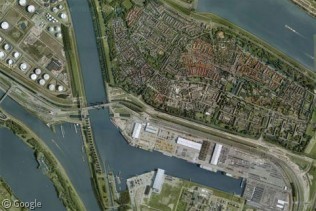
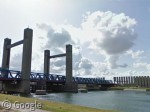
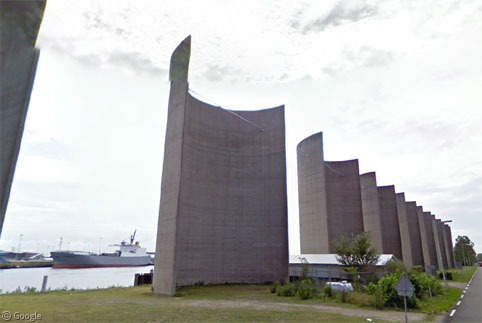
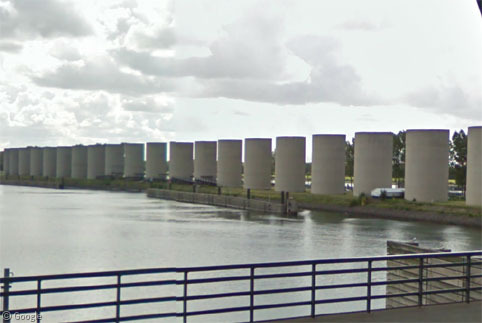
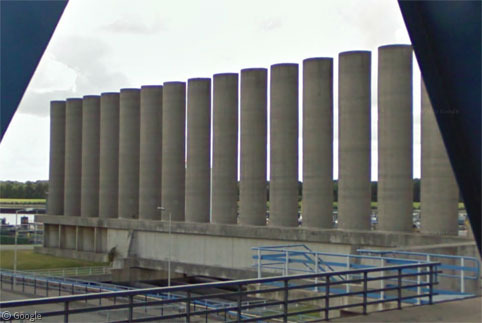
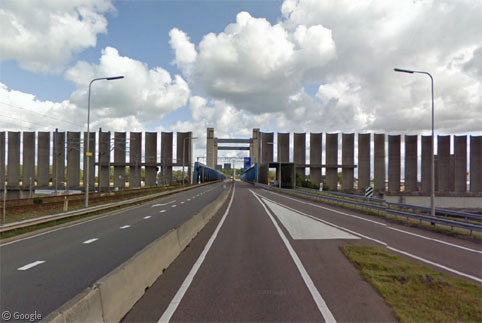
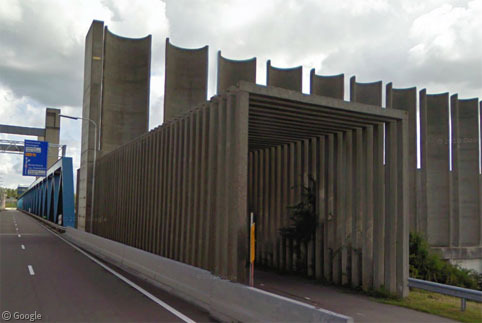
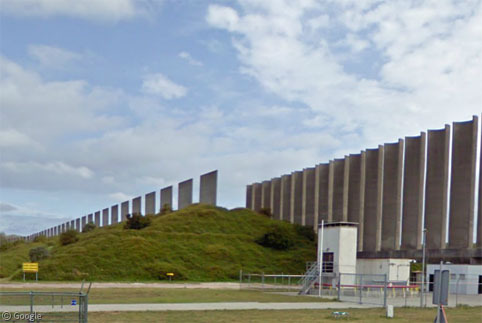
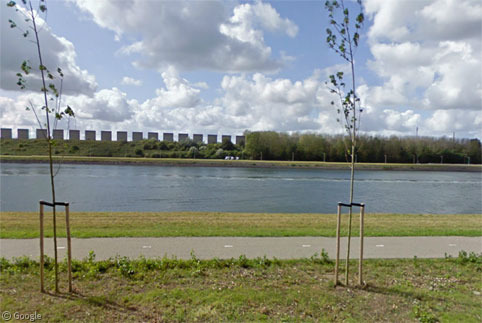
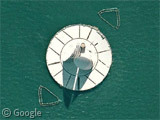
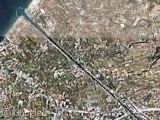


Sharing statistics
Share this site